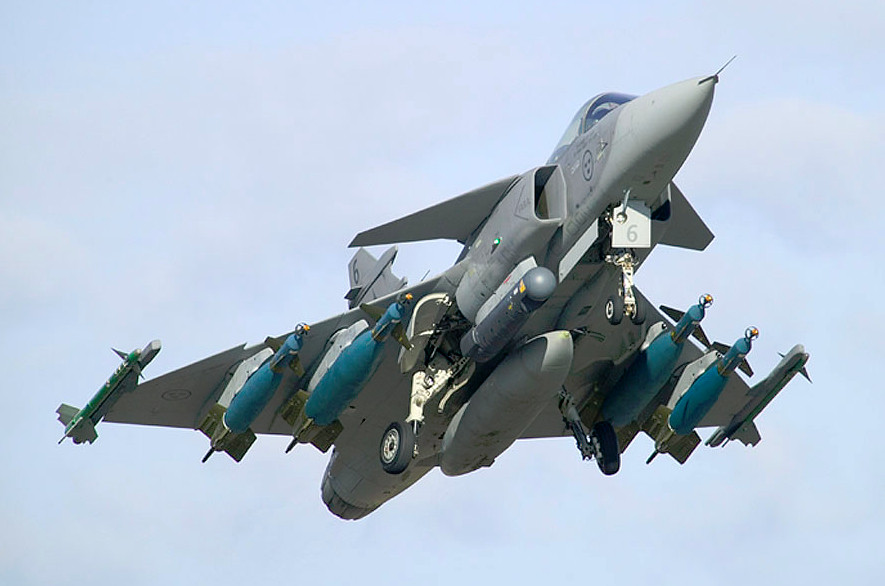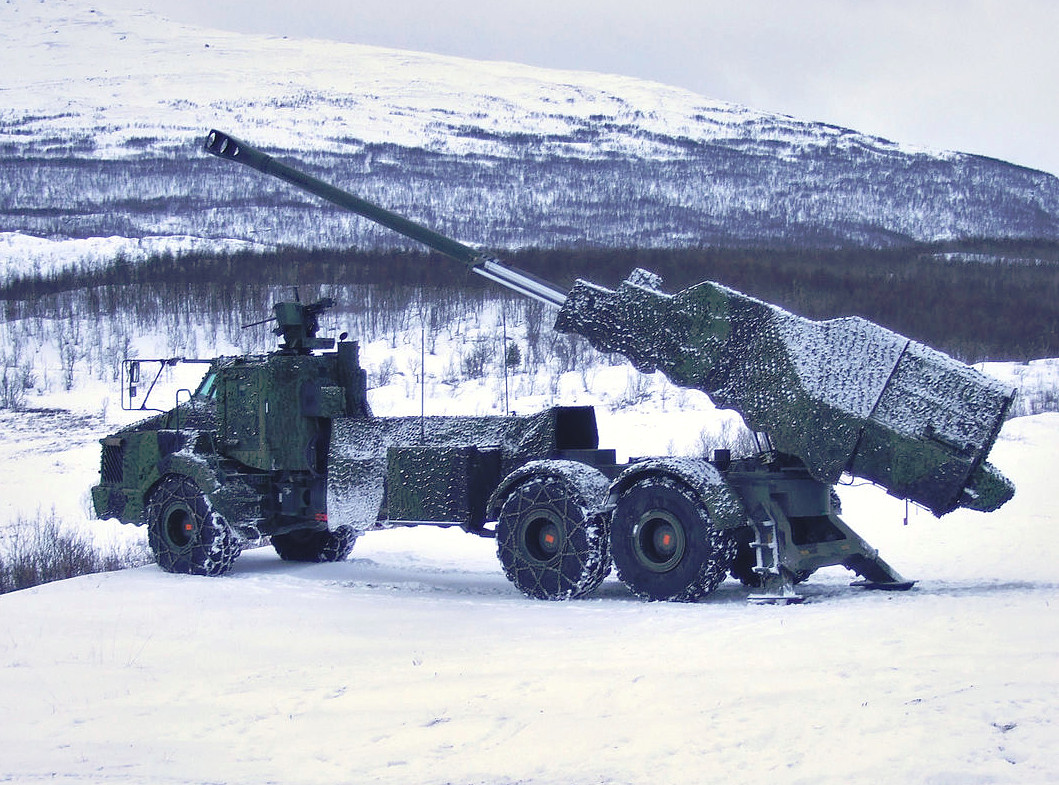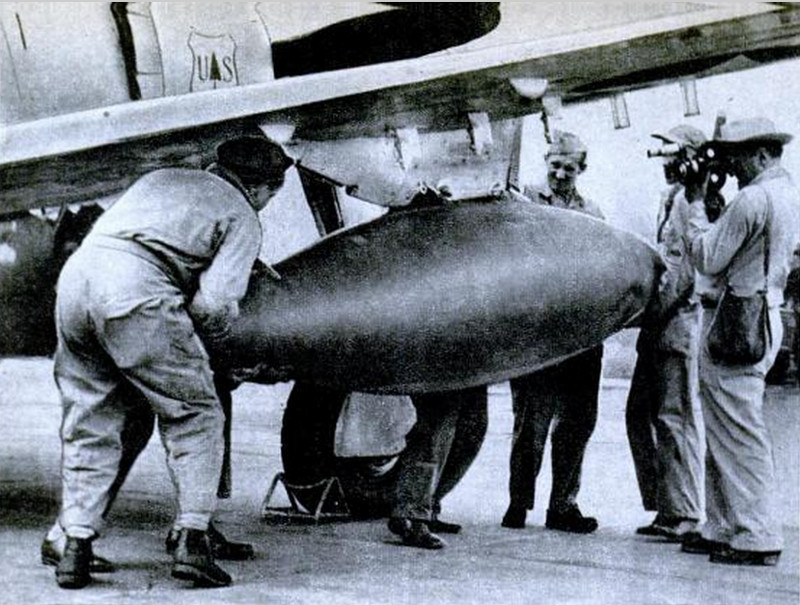An unusually dry summer has touched off dozens of forest fires across Sweden, including in a number of hard to reach and potentially dangerous areas. To try and halt the spread of one blaze in and around a military training range in the municipality of Älvdalen, Swedish emergency management authorities took a novel approach – call in the country’s air force to bomb it.
On July 25, 2018, a JAS 39C Gripen fighter jet from the Swedish Air Force’s F 17 wing dropped a single 500-pound class GBU-49/B Paveway precision-guided bomb on a part of the burning forest. The fire around the range has been burning for two weeks already, threatening nearby communities and forcing evacuations.
“It’s an attempt to remove the oxygen from the fire, which is only a possibility because the fire is on a military shooting range,” Johan Szymanski, in charge of the response to the fire, said, according to state broadcaster SVT. “Our view is that the fire is unique and because of this we must use unconventional extinguishing methods.”
The most immediate problem is that the range is potentially littered with unexploded ordnance, posing a hazard to firefighters on the ground. The danger is not just that individuals fighting the blaze might stumble across something and get injured, but that the intense heat from the fire might just set off any leftover shells or bombs.
The video below shows the actual release of the GBU-49/B over the fire in Älvdalen.

Swedish authorities halted the firefighting for a period on July 18, 2018, based on these concerns. According to Szymanski, there were rules limiting personnel from getting within half a mile of the training area.
The emergency services turned to water bombing aircraft and helicopters instead. Unfortunately, likely due to a lack of personnel on the ground to take advantage of the water drops and get the fire under control, these missions had little impact on the conflagration.
“This was an attempt to solve a unique problem in a difficult-to-reach area,” Szymanski added. “Following the request … we found that an attempt could be made [to bomb the fire].”
To be sure, the GBU-49/B, a dual-mode weapon with laser- and GPS-assisted Inertial Navigation System (INS) guidance systems, would have allowed the Swedish Air Force to focus their attention on a very specific point. The weapon’s effects were also limited enough to avoid creating any additional fires.

It’s not clear whether the Swedish government will call for more of these firefighting strikes in the immediate future. Szymanski did say that the operation validated the concept and that he or his colleagues might consider doing it again in the future.
It’s not the first time the Swedish military has employed actual weaponry to put out fires at this particular range, either. According to an official statement from the country’s Armed Forces, troops have used artillery fire to suffocate blazes in the past.
The basic idea of suffocating a blaze with a large blast is hardly unheard of, either, and specialized personnel who fight oil well fires also use explosives in certain cases to extinguish the flames. In those cases, firefighters lower the improvised bombs into position using a crane or other piece of machinery, rather than dropping them from a plane, though.

The idea of “bombing” a fire from the air isn’t entirely new, either. As early as the 1930s, the United States considered employing aircraft carrying canisters full of water or chemical retardants to attack forest fires, especially those that might be in difficult to access areas, quickly.
After the end of World War II, what was still then the U.S. Army Air Forces began a new project to fully investigate the feasibility of this idea and developed various dedicated aerial forest firefighting weapons. The first of these were modified drop tanks filled with water and equipped with special “variable time” radar proximity fuzes to blow them open right above the fire.
The service also crafted the T-29, a 40-pound TNT charge inside a paper shell with wooden fins at the rear to stabilize it as it fell to earth. Like the Swedish operation in Älvdalen, the goal was to choke off the oxygen supply to the fire with the blast.
The bomb’s construction limited the potential for fragments to actually cause additional fires. Unfortunately, tests showed that the explosion itself was enough to ignite blazes, according to a 1948 U.S. Air Force Air University thesis on the topic of aerial forest firefighting.
P-47 fighters and B-17 and B-29 bombers – some actually flying in U.S. Forest Service markings – took part in the experiments, dropping both types of weapons. The organization ultimately determined the T-29 was not a useful tool, but that the water bombs might be.

Accuracy remained the limiting factor and the United States ultimately abandoned the project. Today, water bombing aircraft release make their runs at extremely low levels over the impacted area to best ensure they are on target, a type of flying that requires a not insubstantial amount of skill in of itself. Using a GBU-49/B would definitely solve the precision problem and allow.
There continues to be a desire for more precise and rapid, stand-off forest firefighting tools given the immense risks the blazes can pose to personnel on the ground in general, even when they’re burning across military training areas. In 2014, Boeing filed a patent for a special artillery shell full of flame retardant chemicals that could allow personnel to rapidly saturate a particular area. It remains unclear if anyone is actively developing this concept.

Still, it’s unclear how practical air or artillery strikes against fires might be in the future from legal or regulatory perspectives. This latest case in Sweden avoided many of those questions since it occurred on a military-controlled training range to begin with. Swedish authorities, or government officials in any other country, would almost certainly be hesitant to approve this sort of operation on or around private land, especially near populated areas.
At the same time, if a forest fire has already forced people to evacuate and threatens to destroy private property, all the parties involved might be more willing to consider this option, especially if other more traditional options seems impractical. The Swedes now have at least one data point to use as a starting point to further exploring the concept.
With the fire in Älvdalen ongoing, and others still raging elsewhere in Sweden, we will definitely be keeping an eye out to see if officials call on the Swedish Air Force again to literally attack the blazes.
Contact the author: joe@thedrive.com
